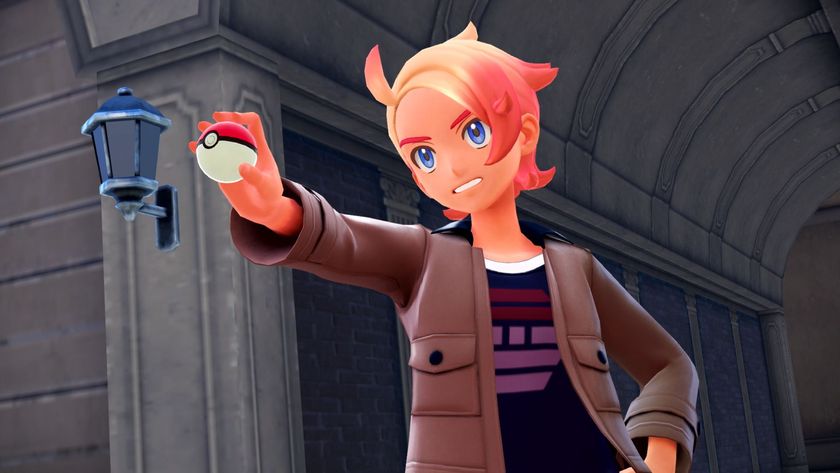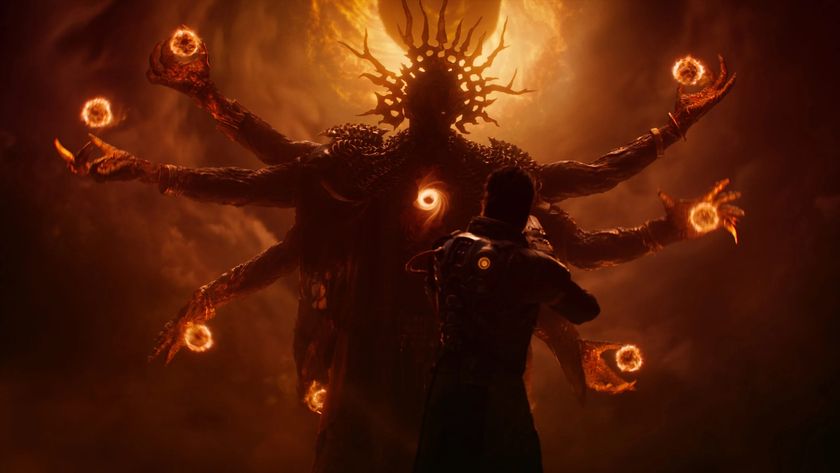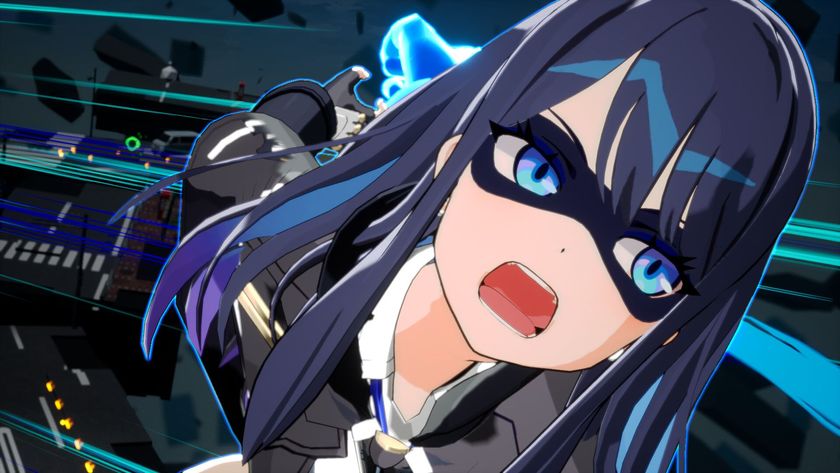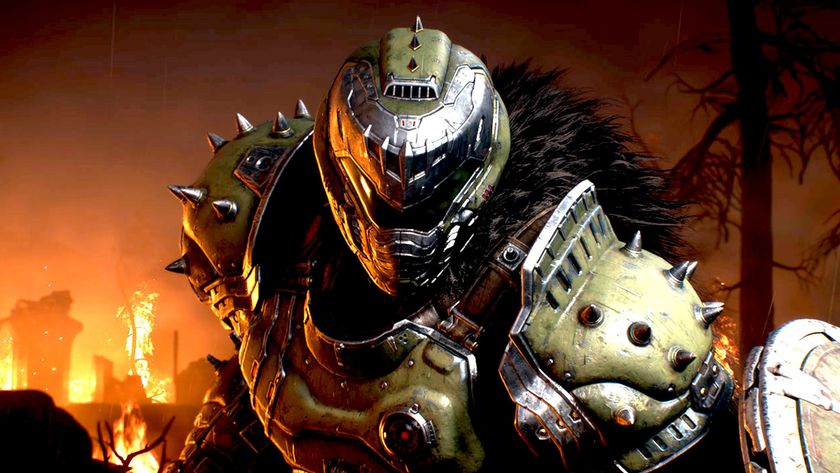The making of... Final Fantasy 6
Even back in 1994, the Final Fantasy series was settling into the sort of routine for which it later became well known – and was often scorned for. While each of the five formative games was set in an unfamiliar universe, with an unfamiliar clutch of characters to serve and know, recurring rhythms and themes had already been established that seemed fundamental to its identity.
Crystals and oversized chickens, knights and castles, a mystical power threatening the world and an unexpected orphan hero: all echoes of Tolkien bottled, infused with Japanese aromas, and then blasted out in bombastic, near-annual game releases. The details changed with each game, but the tone – not to mention the systemic DNA – remained a constant. Lose these anchors and you’d risk losing the Final Fantasy spirit, the only thing yoking one game to the next.
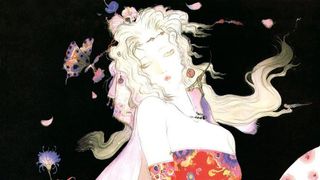
The sixth game, however, interrupted that rhythm in many unexpected ways. Drawing back the curtain on a steampunk world quite unlike any seen in Final Fantasy before, it opened not with the burning of a village or a vainglorious battle between buff-armoured knights, but with a squadron of weary robots trudging mournfully through the snow. It’s here, in the remote town of Narshe (population 2,100), that we first meet the ensemble cast, a rogue’s gallery of eccentrics pulled from the extremities of society – the high royal and penniless pauper – whose stories soon intertwine in delightful, unexpected ways.
“We began work on Final Fantasy 6 with the idea that every character is the protagonist of the story,” says Yoshinori Kitase, the game’s director. “Everyone on the team contributed ideas for characters into a melting pot. We were very keen to design a game featuring individual episodes for each character. In fact, Final Fantasy 6’s influence may have been responsible for the greater emphasis on character creation in subsequent titles in the series.”
For Kitase – who today keeps a steady hand on the Final Fantasy tiller following the departure of series creator Hironobu Sakaguchi from Square Enix – this was his first directorial job. It was a significant promotion for the young designer, who had worked in a range of disciplines across Square’s 8- and 16bit titles. Prior to Final Fantasy 6, he had penned the story for Final Fantasy Adventure on the Game Boy (originating key plot points and turning them into scripted events in the game), been field map designer for Romancing SaGa (shaping the game world’s landscape) and, most recently, event planner for Final Fantasy 5.

“When it came time to begin work on Final Fantasy 6, Sakaguchi divided responsibilities between us,” says Kitase. “He placed me in charge of event production, carefully assessing those parts I directed. I was essentially given the task of unifying all the scenarios and dramatic sections in the game into a coherent narrative.”
Final Fantasy 6 contains the largest cast of playable actors of any game in the series, with 14 permanent playable characters, and a further clutch of key performers who are either momentarily placed within the player’s control, or are crucial to the plot’s development. With so many discrete elements, ensuring coherency and intelligibility for the player was inevitably Kitase’s most demanding challenge. “If we consider that Final Fantasy games are divided into two core elements: battles and drama,” says Kitase, “then I oversaw design of the latter while Hiroyuki Ito supervised the battle aspects. It was then up to Sakaguchi to bring the project together as a whole, intelligible piece.”
Sign up to the 12DOVE Newsletter
Weekly digests, tales from the communities you love, and more
Work began on the game almost immediately after the international release of Final Fantasy 5 in 1992, and the entire production lasted just one year. Even though lines of responsibility were carefully drawn – necessarily so, for such an ambitious game with such a challenging development schedule – in reality the creative journey proved loose and collaborative.
"The idea was to transform characters from mere ciphers for fighting into true characters with substance"
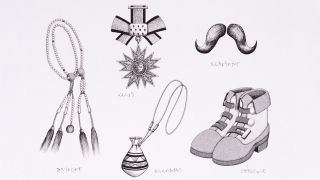
The collaborative nature of Final Fantasy 6’s inception is further evidenced by the contributions of its four key art directors. Tetsuya Takahashi – who later directed Xenogears and Xenoblade Chronicles for Nintendo, and was recently revealed to be working on a title called X – designed the imperial Magitek Armors seen in the game’s iconic introductory sequence, as well as being responsible for the world map. Hideo Minaba was behind the world’s architecture and the interiors of the game’s many buildings, and Kazuko Shibuya assumed the role of character sprite designer. Meanwhile, Tetsuya Nomura, who would later become the series’ main character designer, handled the look of the monsters, designing battle sprites for the 300-plus enemies encountered over the course of the game. That the final result was so cohesive despite being split up among the four is a testament to Square’s creative process at the time.
“It was a hybrid process,” explains Kitase. “Sakaguchi came up with the story premise, based on a conflict with imperial forces. As the game’s framework was designed to provide leading roles to all the characters in the game, everyone on the team came up with ideas for character episodes.”
Kitase’s role was to piece these disparate vignettes together like a puzzle. “I can’t say that I conceived the complete story,” he recalls. “Locke and Terra, for example, are greatly coloured by Sakaguchi’s influence. Meanwhile, the background and in-game episodes for Shadow and Setzer were mainly devised by Tetsuya Nomura [character designer for the Final Fantasy series from the seventh game onwards], while Kaori Tanaka [AKA Soraya Saga, illustrator and co-creator of Xenogears] provided suggestions for Edgar and Sabin, among others. I devoted my time and effort to creating Celes and Gau.”
While Square’s other in-house teams played with the idea of multiple protagonists in an RPG via another contemporaneous game, Live A Live, Final Fantasy 6 was the first high-profile game to make the perspective-shifting storyline work with such flair and vigour. “Looking at videogame design and development up to that point,” says Kitase, “I supposed that action games, for example, relied on sense and instinct while RPGs appealed more to reason and logic. What made the Final Fantasy series so innovative was the emotion realised from drama within the game in addition to those other elements. I believe this innovation was more apparent than ever before in the sixth game. This game really brought that creative goal into full bloom.”
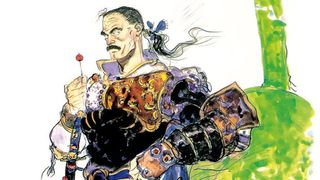
The Japanese RPG had always wrapped around the spine of story, but for Kitase and his team Final Fantasy 6 offered a chance to increase the creative emphasis on narrative and character exposition. “The idea was to transform the Final Fantasy characters of the time from mere ciphers for fighting into true characters with substance and backstories who could evoke more interesting or complex feelings in the player,” he says. “Since the scale of each character’s individual story was expanding, I began linking this to the concept of different dramas developing, according to the player’s choice of character in the game.”
Final Fantasy 6’s technique for investing players more fully into the narrative and inter-character relationships was to switch control of characters or groups of characters over the course of the storyline. This enabled players to function as both spectator and active participant in the business of drawing the various narrative threads together, as if taking part in an extended play.
Each of the controllable personalities encountered has a completely distinct – and unique – way of behaving in battle, not to mention their own fully fleshed out backstory to uncover. The battle system, while more orthodox than the game’s story, is also wonderfully inventive, and the fact that each character in the game has their own clutch of moves and approaches – echoing their personalities – helps emphasise the character development. Gau, for example, is a feral child found wandering the desert, who can be tempted into the party with a slab of dried meat and has the capacity to learn new attacks from the animals and monsters that the party encounters. This marriage of backstory with active application in the game world fostered a clarity and precision rarely seen in releases of the time.

But balancing a game with multiple personalities in the lead role was not without its challenges. “Maintaining a careful equilibrium between all the characters was probably the greatest challenge I faced,” says Kitase. “However, I ended up so involved with each personality while scripting the scenarios that there were points where, looking back at the game today, it’s clear that I somewhat lost this balance. For example, as the scenes featuring Celes and Kefka progress, these characters (while not directly playable in the game) became far greater and more influential than originally intended when development began.”
Released toward the end of the life of the SNES (AKA Super Famicom), the game brought with it a number of technical difficulties as the team attempted to draw ever-more impressive spectacle from the hardware. “From a technical point of view, I’d say our greatest challenge was the 3D rail scene,” says Kitase. “We used the Super Famicom screen support mode known as Mode 7 and painstakingly illustrated the graphics one dot at a time to create a mock 3D effect. Although producing these graphics was a huge undertaking, the results we finally achieved were unfortunately far rougher on the eye than we had originally hoped. So, in the end, this section didn’t leave anything like the lasting impression we intended for them.”
Final Fantasy 6 launched on schedule and within budget; but not without the strain of a significant crunch towards the end of production, which was necessary to iron out remaining issues in the code. “A huge challenge as production continued was managing memory, which, at the time, couldn’t be entrusted to computers and had to be done manually,” explains Kitase, “This meant human errors were much more prevalent than, say, when making games today.”
Moreover, at the time that Final Fantasy 6 was being developed, Square had no tools or software to aid programmers in detecting those errors. “I distinctly remember the process taking a long time,” Kitase says. “In some ways, there’s very little difference with debugging a game today when it comes to technical problems: we’re still tormented by bugs! And goodness, the final debug phase of Final Fantasy 6 was an exhausting affair. In fact, I missed out on the early reception to the game, as I took a month or so of holidays after production was concluded just to rest and recuperate.”
Final Fantasy 6’s story is atypical, both in terms of the series and the genre into which it somewhat awkwardly fits. The game suffers none of the bloated excesses and philosophising associated with Japanese RPGs of the time, each character presenting believable motivations, flaws and quirks with an authenticity that enriches the narrative. The plot keeps fantasy metaphysics to a minimum, instead focusing on more grounded topics of politics and empire-building – a decision that helped to endear and connect the game with western audiences, which found the storyline more immediately accessible and welcoming to their sensibility.

“In those days we didn’t have the Internet and, as a more junior staff member, I wasn’t given the opportunity to venture overseas – so I wasn’t really aware of the reception the game received outside of Japan,” says Kitase. “However, in more recent years, I’ve regularly tagged along on PR tours to Europe and America – and I have had a lot more opportunity to talk with foreign media and fans. I must say, whenever I go on these tours I’m taken aback by the number of westerners who ask me to sign their Final Fantasy 6 cases. In Japan that would apply more to the subsequent game, Final Fantasy 7, but I get the impression there’s a large number of players in the West who prefer the earlier game.”
Launched in America with the title Final Fantasy 3 (the true second, third and fifth games in the series had been overlooked for translation), the game’s English translator, Ted Woolsey, was granted just 30 days to complete his work. This gruelling deadline was compounded by Nintendo of America’s strict guidelines on the use of language in games for its system. In an interview at the time Woolsey explained that “there’s a certain level of playfulness and... sexuality in Japanese games that just doesn’t exist here [in the USA], basically because of the rules and guidelines”. The censorship extended to graphical assets, with nudity being covered and even some signs in being changed from ‘Bar’ to ‘Café’.
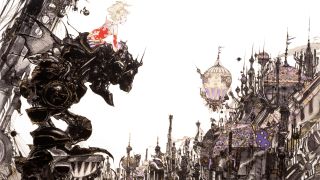
Perhaps inevitably for a series that had established clear themes and ideas in the previous titles, the abandonment of certain of the Final Fantasy touchstones of the past was disorientating to some Japanese players upon release in 1994. “The absence of crystals – a symbolic item, which ran through previous FF titles – in this game, and the realisation of a fully technological civilisation and so on seemed to bewilder some of the more serious fans of the series,” says Kitase. “That said, the impact of the opening scene, with Magitek Armors traversing through snowy fields, was well regarded; and fans were willing to accept the challenging culture of the game, so it was mostly well received at the time.”
Final Fantasy 6’s popularity has continued to grow as the series has gained wider recognition in subsequent years, with new fans tracking back to the earlier titles to explore its beginnings. It’s also worth noting that this was the final 2D Final Fantasy game before the series switched from Nintendo hardware to Sony’s PlayStation, and as such the game represents a development team in full control and mastery of the hardware.
“It’s maybe strange to say [this], but I miss the limitations of making games in those days,” Kitase acknowledges. “The cartridge capacity was so much smaller, of course, and therefore the challenges were that much greater. But nowadays you can do almost anything in a game.

“It’s a paradox, but this can be more creatively limiting than having hard technical limitations to work within. There is a certain freedom to be found in working within strict boundaries, one clearly evident in Final Fantasy 6.”
Read more from Edge here. Or take advantage of our subscription offers for print and digital editions.
Edge magazine was launched in 1993 with a mission to dig deep into the inner workings of the international videogame industry, quickly building a reputation for next-level analysis, features, interviews and reviews that holds fast nearly 30 years on.

